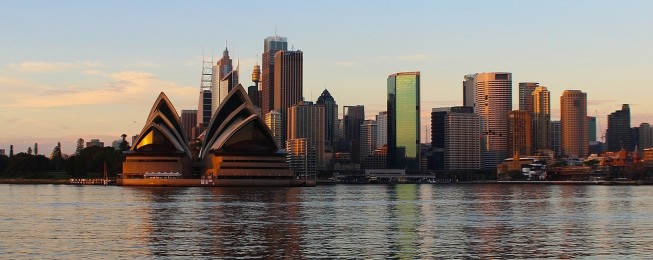
Postcard from Sydney
Helen Poulter, IGov Team, 5th February 2018
This postcard from Australia, is the first of a series which is being undertaken during Phase 1 of research for my PhD looking at the role that adaptive governance will play in enabling energy system transformation. At the end of my stay, I will provide an overview postcard of energy in Australia. In between then and now, I will send postcards from different States and will also provide a comparison between the States in future postcards.
This initial postcard is written after being in Sydney for a brief time but I will be returning to Sydney at the end of my stay and will be able to offer a more detailed viewpoint at that time. The points below are areas of interest raised around consumer engagement during some initial interviews which will be built upon as I visit the states of the Australian Capital Territory, Victoria and South Australia. I also look briefly at the future role of networks.
Within the Sydney area and in New South Wales (NSW), households initially bought their solar PV as a result of high FITs, but are now buying solar and storage for reliability. Sydneysiders are also showing an interest in high-end electric vehicles. The Tesla showroom in central Sydney volunteered that they are selling at least two vehicles a day just from that showroom. What is not clear is whether this current uptake of batteries, or electric vehicles, is through a desire to reduce carbon or to own new technology, also whether owning behind the meter generation is making NSW residents more ‘energy aware’. New South Wales has been slow in the uptake of solar pv compared to Victoria and South Australia even though retail prices for Victoria and New South Wales are similar, unlike South Australia which has the highest retail electricity prices in the National Electricity Market (NEM). Understanding this difference between DER uptake in the various states will be raised in future postcards.
Following on from whether consumers are engaging with how they use and buy their energy, engagement with customers appears lacking from the ‘big 3’ retailers – or ‘gentailers’ as they are known here. It seems many customers are unaware that they are able to switch companies even if they have bought a PV system through their retailer. FiT rates are now set by the retailer, with the mandatory minimum – if they decide one is needed – set the state regulator. This has meant again, that many consumers believe, wrongly, that they are locked into a contract which has given them a high FIT rate, and that they are unable to switch.
The three companies – AGL, EnergyAustralia and Origin – own 40% of generation and have an 80% market share of retail. This power crosses over to the influence that these three have over the Australian Energy Market Commission (AEMC). The AEMC is responsible for making and managing rule change requests under National Electricity Rules (NER) and the National Electricity Retail Rules (NERL). This is separate from, and in addition to, the Federal regulation which is undertaken by the Australian Energy Regulator (AER). In the UK both of these functions are undertaken by Ofgem (whether this is a benefit will be researched during my stay). In talking to people within the industry it appears that due to the large market share of both generation and retail that the ‘big 3’ have nearly a 100% success rate in respect to rule change requests, compared to virtually nil from any community groups, consumer advocates, start-ups etc. For new retailers entering the market this has meant that there has been difficulty in competing on a level playing field and, for consumers, that switching between the ‘big 3’ brings very little benefit.
AGL – one of the ‘big 3’ – is the most progressive, with their CEO Andy Vesey recognising that transformation is happening and in order to embrace this transformation not only will their business model need to alter but so will the type of person involved in their company. In addition to new energy technologies themselves, AGL is aiming for 40% of their high level employees to be female by next year and understand that the skills needed within the company will need to change. The main skill requirement they are now looking for is the ability for employees to be flexible in their thinking giving the company the ability to move and flex with a transformative energy system. It will be interesting to note whether this progressive model translates into consumer benefits.
The distribution networks predicament is that the DNO’s are required, for all network upgrades now, to consider and compare non-network solutions to traditional solutions. If these solutions are more cost-efficient, the question is who should undertake those solutions? A new ruling in December states that networks are not able to own the non-network solution. However, there is no apparent way in place to tender the solutions out. More on this next week.
Related Posts
« Previous Presentation: The Market Implications of the Brooklyn Micro Grid Global Insights: 6th February 2018 Next »







